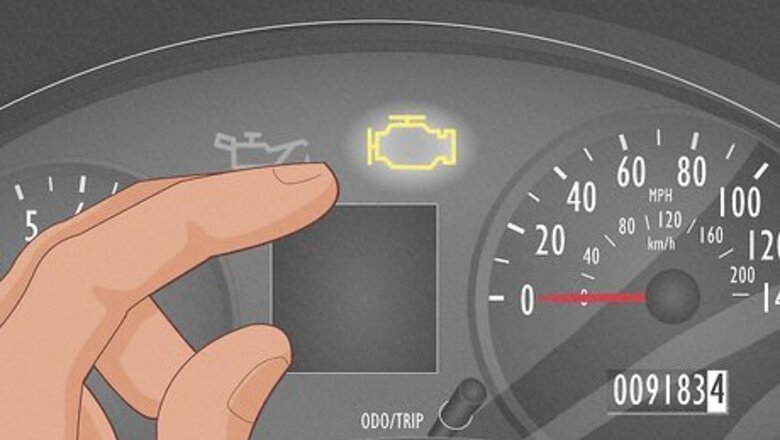
views
- Bad O2 sensors may lead to excess fuel in your engine, causing decreased fuel efficiency and possibly black smoke or sulfuric smells from the exhaust.
- Over time, your engine may also start stalling, rough idling, or making pinging and knocking noises as a result of incorrect air-to-fuel ratios.
- Eventually, a bad O2 sensor will cause very high emissions or even the complete failure of your catalytic converter.
Illuminated Check Engine light
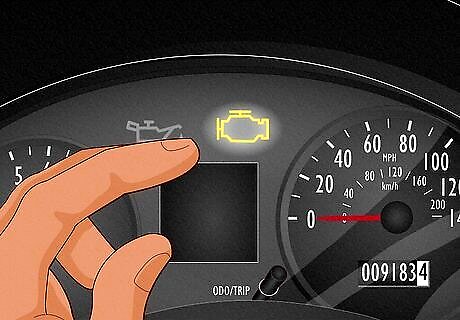
Bad O2 sensors affect your engine and trigger the Check Engine light. When your O2 sensors start to go, they can’t measure the levels of oxygen in your exhaust accurately. This means the engine control module won’t know to correct any air-to-fuel imbalances in the engine. This can lead to a wide variety of engine problems, any of which can turn on the light. The Check Engine light doesn’t monitor your O2 sensors directly. It can only sense engine problems that may be caused if they start to go bad. The light may also come on if your sensor is just dirty rather than faulty. In this case, you or a mechanic might simply have to remove and clean it to resolve the issue. To pinpoint the problem:Try plugging an OBD code scanner into the dash to detect which O2 sensor is faulty. Diagnostic codes from the engine control module that might indicate an O2 sensor problem include P0030, P0031, P0130, P0131, P0132, P0133, P0134, P0137, P0140, P0141, P0161, P0172, P2195, and P2270.
Decreased fuel efficiency
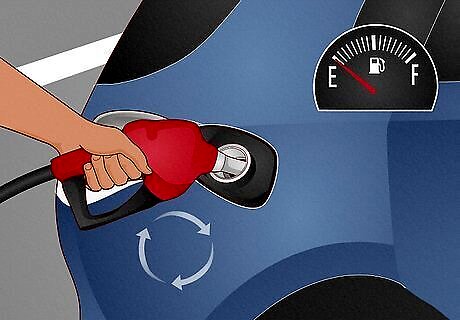
Faulty O2 sensors can cause your engine to burn more fuel than needed. Have you been spending more on gas or making more frequent trips to fill up the tank than usual? The culprit may be your O2 sensors. If they can’t monitor the air-to-fuel ratio in your combustion cylinders, the mixture may become “rich” (fuel-heavy), meaning your engine is using more gas than it needs to function. This results in noticeably poor fuel economy (and an equally noticeable hit to your bank account). To fix the problem: Schedule an appointment to inspect and replace your oxygen sensors as soon as you notice decreased fuel efficiency (or change them yourself if you’re car-savvy, but the sensor location on certain makes and models may make this difficult to do at home). The cost of O2 sensors varies by a vehicle’s make and model and where the sensors are located. New sensors can cost under $100 for some vehicles or around $300 for others (before labor costs).
Sulfuric or gasoline smells from the exhaust
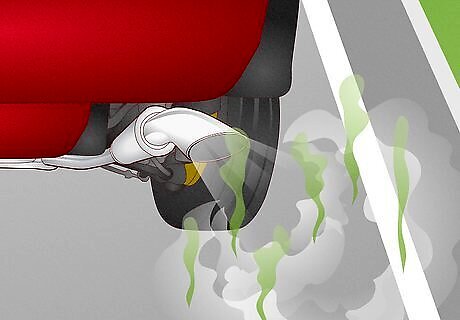
Pungent, excess fuel can build up in the engine from bad O2 sensors. Notice if you smell sulfur, a rotten egg-like smell, or plain gasoline when you turn on your car or stand outside it while it’s idling. This is the excess fuel in the engine burning off, and could indicate your oxygen sensors are not measuring the lack of air in the combustion cylinders. This smell is typically accompanied by black smoke coming out of the exhaust. If your vehicle has reached this point, it’s probably because more than one O2 sensor has failed (most vehicles have 2 oxygen sensors per exhaust pipe). To fix the problem: Plan to have all your oxygen sensors replaced at one time. It might be an expensive repair, but you’ll save money on labor if you do it all at once.
Black smoke from the exhaust
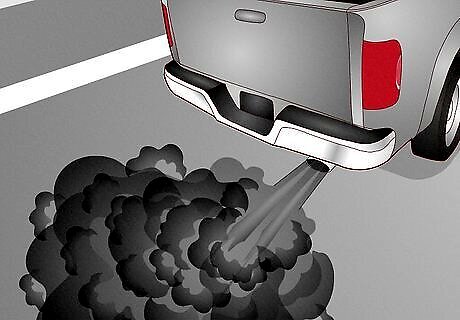
Black smoke comes from improper combustion from low oxygen levels. Oxygen is what your engine uses to burn fuel. When there’s too little, the combusting gasoline creates black smoke that travels out through your exhaust pipe. Normally, a functioning O2 sensor would tell the engine control module to adjust the air-to-gasoline ratio, but when it malfunctions, the engine continues operating with too much fuel. Besides the Check Engine light, black smoke is the only visual symptom of a faulty oxygen sensor. Black smoke is also a sign that your emissions levels are way too high (a problem that O2 sensors are designed to help prevent). Smoke (especially black smoke) is a sign of potentially serious and dangerous conditions in your engine. Drive as little as possible until you can take your vehicle to a mechanic.
Poor motor performance while driving
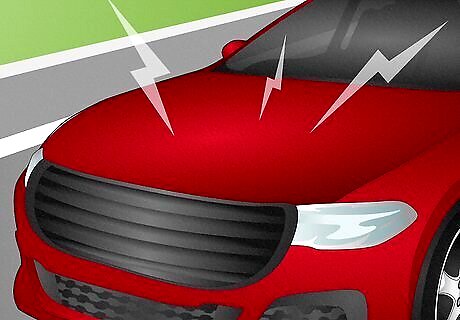
Bad sensors can cause misfires, lurching, poor acceleration, or jerking. Notice if your vehicle “fights” you when you start the engine or as you’re driving. If you’ve been driving with bad oxygen sensors for a long time, the imbalance of air and fuel can degrade your engine’s overall performance. In severe cases, you may even experience power surges or a complete loss of power on the road. It’s generally safe to drive with a bad oxygen sensor for a short time until you can visit a mechanic. Over time, though, the sensors will cause larger and larger issues, like engine failure, that can lead to accidents.
Strange pinging or knocking sounds
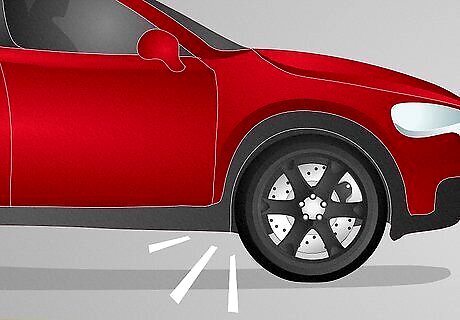
Noises from beneath the engine may be caused by too much air. When your O2 sensors can’t monitor the air-fuel mixture, the mixture may run lean (meaning there’s more air than fuel). This leads to a buildup of carbon in the combustion chamber, which can cause pinging, knocking, or rattling noises (particularly when you turn the ignition on). Other causes for these noises might be clogged fuel injectors, bad fuel, or other engine damage.
Rough idling

Your engine may run extra fast when parked or idling. Normally, the RPM rate for an idle engine is under 1,000. If there’s excess fuel in the engine due to bad oxygen sensors, though, the RPM may spike beyond 2,000 or even 3,000. There are multiple reasons your engine may have a rough idling problem, though, so this alone isn’t a surefire sign of a bad O2 sensor. Rough idling may also be accompanied by engine misfires caused by poorly timed combustion intervals. The possible cause: You may have driven too many miles with dirty or faulty sensors, especially if you have an older vehicle. Most O2 sensors last for 30,000 to 50,000 miles (48,280 to 80,460 km), or about 3-5 years for the average driver.
Stalling engine

Rough idling caused by bad O2 sensors can cause the engine to stall. The engine may misfire when you turn the ignition or shut down completely since it can’t sustain the right amount of power and fuel to function properly. This typically only happens if you’ve been driving with bad oxygen sensors for a long time and the engine has sustained some damage as a result. A temporary solution: Try turning off the car and restarting the engine. Often, you’ll be able to successfully start the engine after another try or two. However, this is a major sign that your vehicle needs maintenance soon.
Very high emissions levels
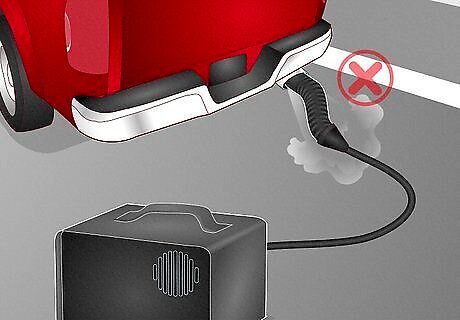
If you fail an emissions test, bad O2 sensors are a likely culprit. Your oxygen sensors are a major component of your emission control system, and without them, you’ll likely develop a noticeable imbalance of fumes in the exhaust. Ask your mechanic to run a diagnostic test if you fail a mandatory emissions test—there are several reasons your emissions may be out of whack, but your O2 sensors are some of the first things to check.
Catalytic converter failure
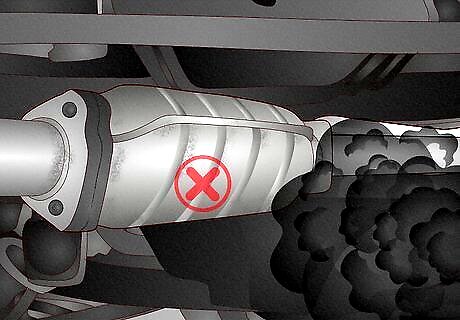
Without O2 sensors, your catalytic converter may give out suddenly. Your catalytic converter turns toxic gasses from engine combustion into less-pollutant exhaust fumes. It needs a specific amount of air to function properly, and if your oxygen sensors aren’t working, it could fail in an instant and allow harmful substances to billow out of your exhaust pipes. A bad catalytic converter may also cause your vehicle to fail an emissions test. Look for dark smoke or a sulfur smell from the exhaust, or excessive heat underneath the vehicle to determine if your catalytic converter may be faulty. To fix the problem: Have a mechanic replace your catalytic converter and O2 sensors. On newer vehicles, converters can cost anywhere from $500 to $2,000 or more (plus labor) since they contain rare, valuable metals.




















Comments
0 comment